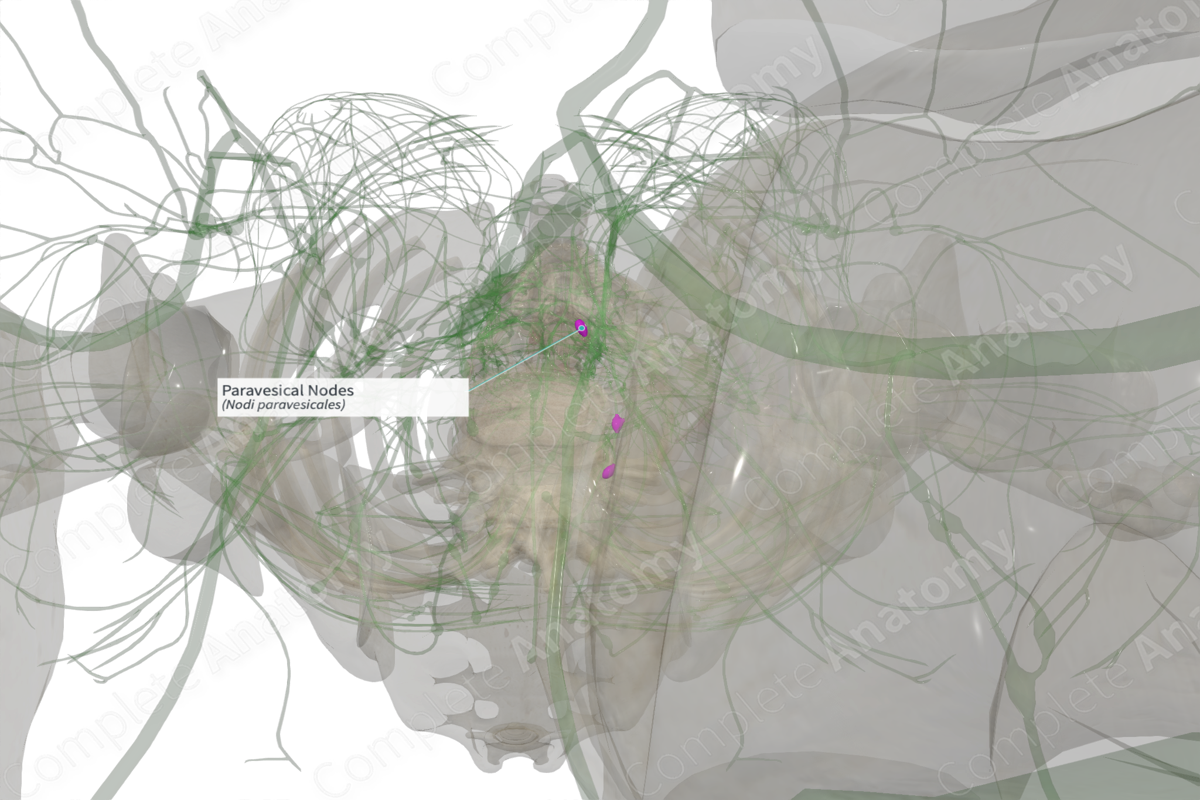
Quick Facts
Location: Surrounding the urinary bladder.
Drainage: Urinary bladder.
Direction of Flow: External and Internal iliac lymph nodes > Common iliac lymph nodes > Lateral aortic lymph nodes (left) and lateral caval lymph nodes (right) > left and right lumbar lymph trunk > cisterna chyli > thoracic duct.
Related parts of the anatomy
Description:
Description: (Location & Drainage)
The paravesical lymph nodes are found in the subperitoneal tissue surrounding the urinary bladder. They can be divided into three groups: the prevesical, lateral vesical, and postvesical (retrovesical) lymph nodes, which are found anterior, lateral and posterior to the urinary bladder, respectively. The lateral vesical lymph nodes are the most consistently present nodes and are found adjacent to the vesical arteries.
The paravesical lymph nodes drain to the external and internal iliac lymph nodes, returning lymph to the lateral aortic (left) and caval lymph nodes (right) and the left and right lumbar lymph trunks.
Description:
Description: (Location & Drainage)
The paravesical lymph nodes are found in the subperitoneal tissue surrounding the urinary bladder. They can be divided into three groups: the prevesical, lateral vesical, and postvesical (retrovesical) lymph nodes, which are found anterior, lateral and posterior to the urinary bladder, respectively. The lateral vesical lymph nodes are the most consistently present nodes and are found adjacent to the vesical arteries.
The paravesical lymph nodes drain to the external and internal iliac lymph nodes, returning lymph to the lateral aortic (left) and caval lymph nodes (right) and the left and right lumbar lymph trunks.




